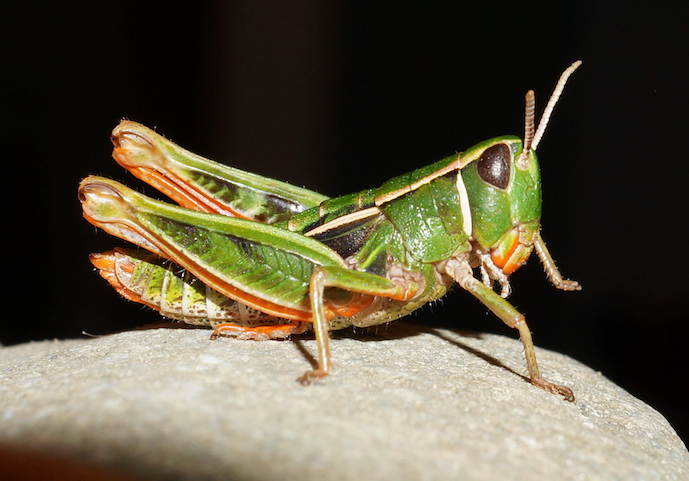Global climate change is changing everything, but the gradual processes make it hard to spot the extent of the impact. Change in local climate and the effects it has on species and ecosystems are most apparent where there is a steep gradient in conditions.
A good example of a steep environmental gradient can be found on any tidal rocky coastline, where the tide means some creatures live under sea water, others are exposed to air occasionally, while others that live further up the beach are exposed to drying for much longer. All parts are physically near each other making the gradient in conditions steep. Coastal environments are impacted by global climate change because warming results in the melting of glaciers and polar ice, which in turn leads to rising sea level.
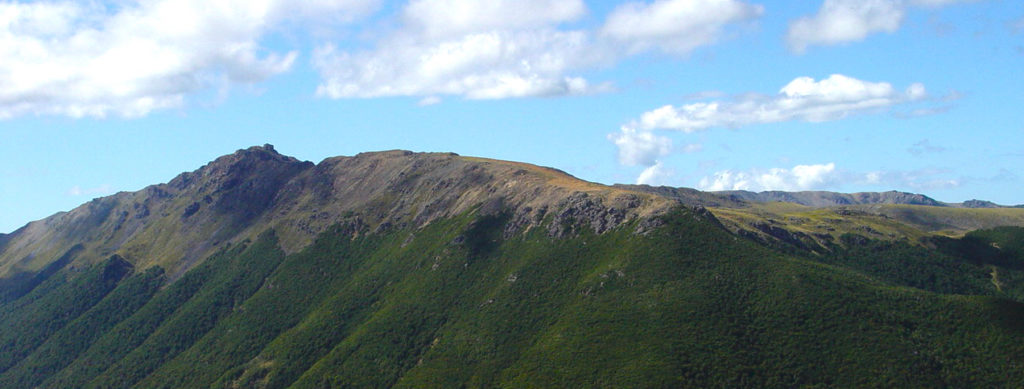
On land, a similar situation exists on mountains because the slope of the mountainside means nearby places can have very different conditions. Most obvious as you move up a mountain is the lowering temperature. It is colder near the top than the bottom which is why you go up a mountain to find a ski field.
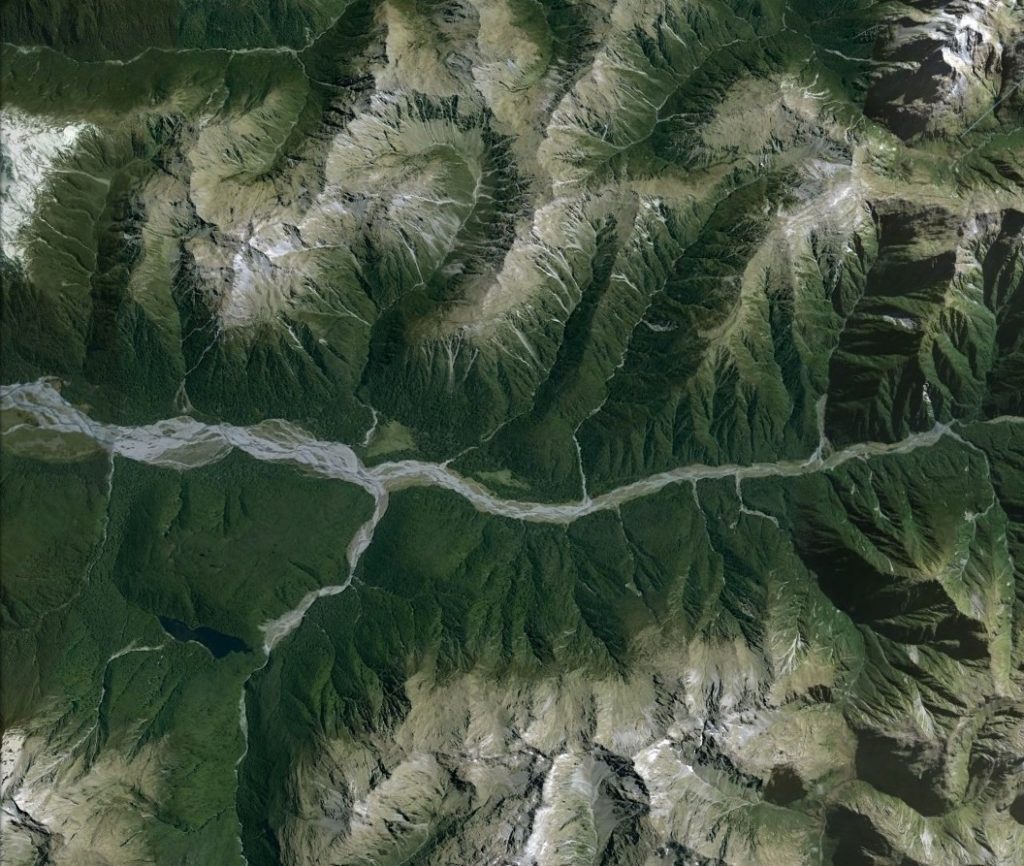
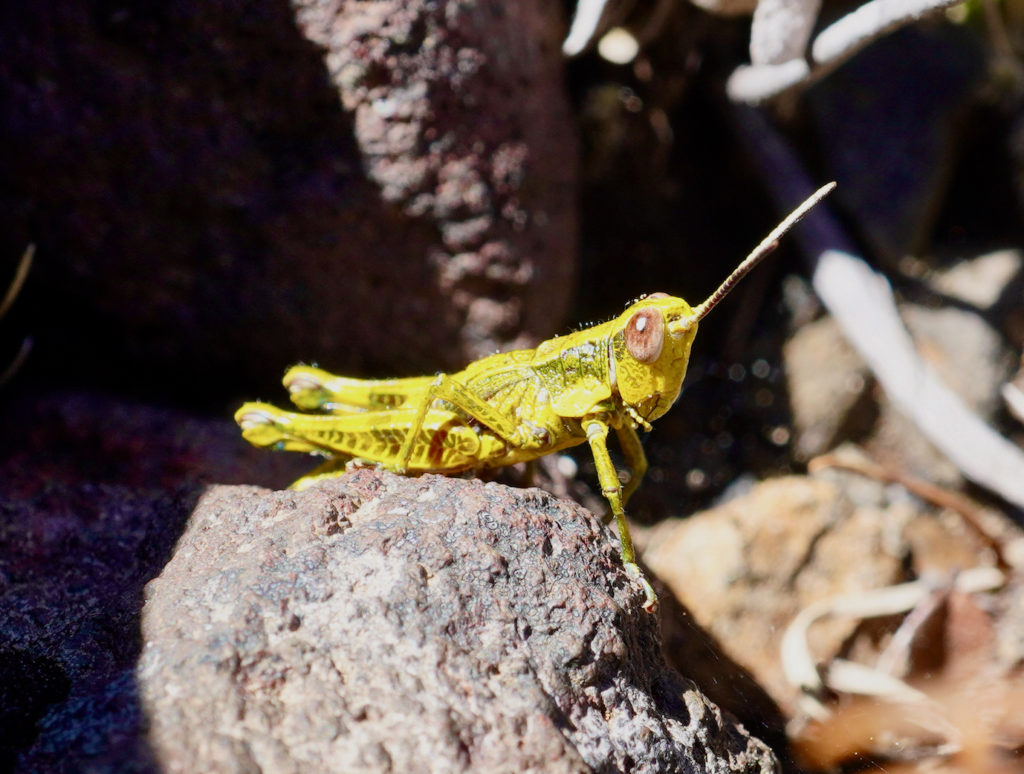
Animals, plants, microbes and fungi that live in the alpine zone, such as this grasshopper (Sigaus piliferus on Mount Ruapehu) have evolved to thrive in the conditions of extreme day-night and seasonal fluctuations in temperature and water availability. Survival means coping with all the different conditions, including being able to freeze when it is cold and re-animate when it is warmer.
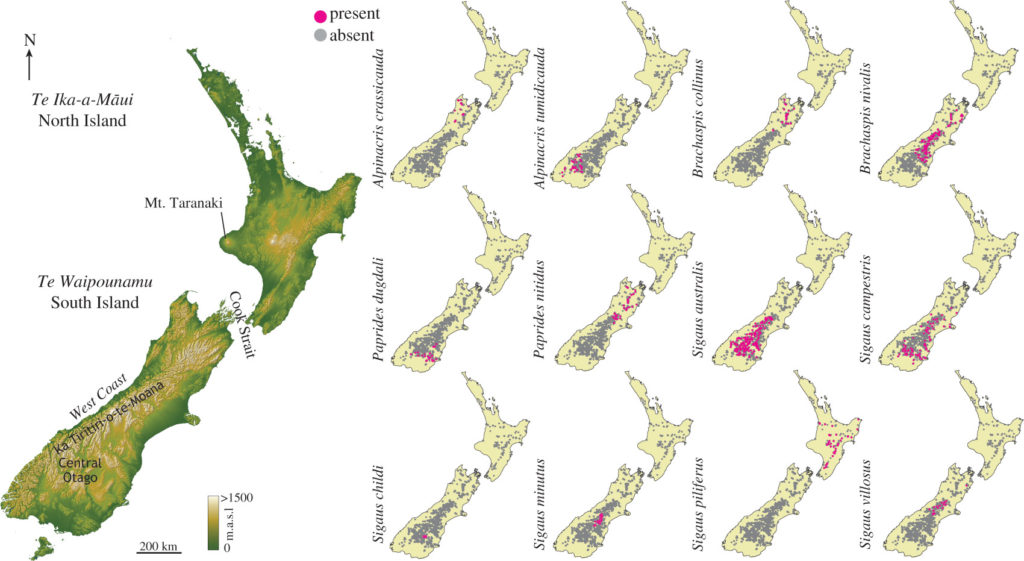
Using the known distribution of New Zealand’s endemic alpine grasshopper species we identified their preferred habitat based on climatic conditions, and then modelled the future status of those habitats given anthropogenic climate warming. We found that available habitat will change for these alpine creatures very quickly; in about 70 years some species could be without suitable habitat that they can use.
It is easy to measure environmental conditions such as average temperature today, and good data about conditions in the past come from ice-cores and other sources, the future is more uncertain. We know the physics that connects atmospheric gases with global temperature, but the future depends on what people do. We can predict temperature changes during the rest of this century for several scenarios which are based upon the balance between the Earth’s heat (energy) gain and its loss (radiative forcing). The most extreme scenario used by the IPCC, RCP8.5, would result with from continued increase in GreenHouse Gases emissions. A more optimistic, but highly unlikely scenario given current trends, RCP2.6, would involve reduction in GHG emissions starting in 2010. RCP2.6 will still result in a 2˚ mean global temperature rise by 2100 (compared to 1750), compared to about 5˚ under RCP8.5.
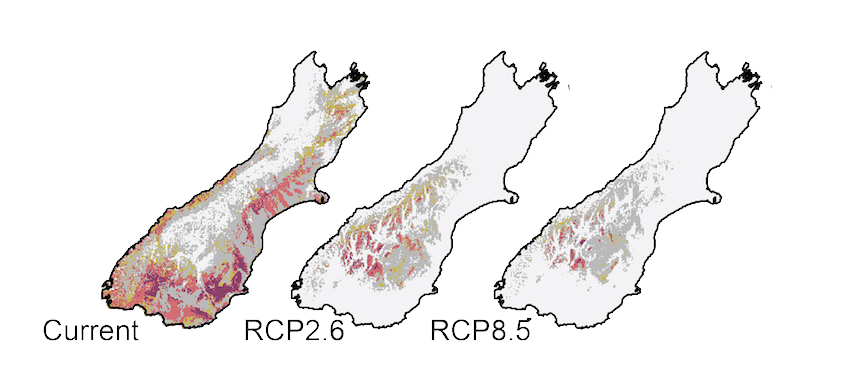
Our findings apply to all biology living in the alpine zone and, by extrapolation, to all biology in New Zealand. Within one human lifetime, habitat availability will have changed catastrophically for many species… Others may gain, but these will often be species that humans have moved from their native habitat, and become weeds and pests.
